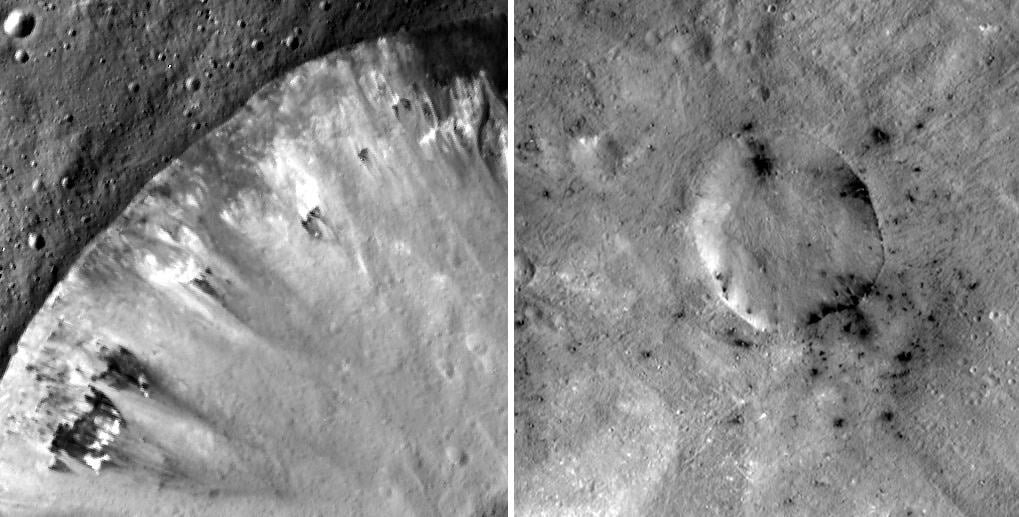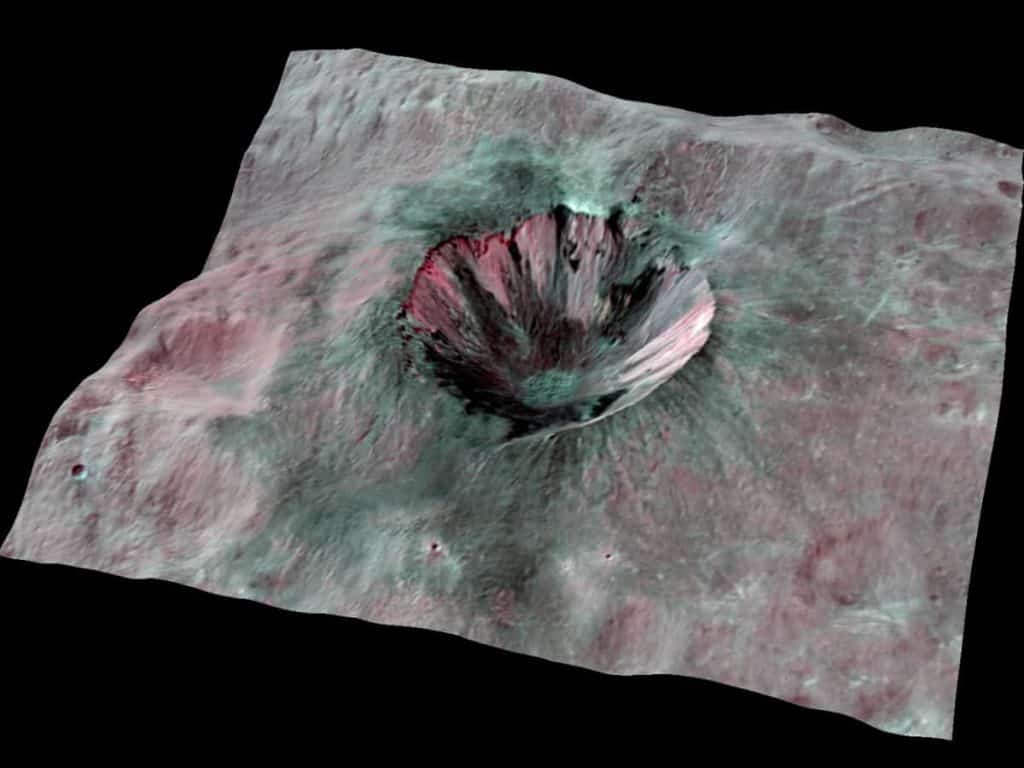Dark material seen on the giant asteroid Vesta by instruments on NASA’s Dawn spacecraft was likely emplaced by the low-speed impact of a carbon-based asteroid, according to research described in a new paper.
The mysterious dark material seen by Dawn’s framing camera has the same composition as carbonaceous chondrite meteorites, according to “Delivery of dark material to Vesta via carbonaceous chondritic impacts” published in Icarus. Vishnu Reddy of the Max Planck Institute for Solar System Research is lead author and Planetary Science Institute Research Scientist David P. O’Brien is a coauthor.
In the most comprehensive analysis of the dark material to date, Dawn scientists describe how this carbon-rich material tends to appear around the edge of two giant impact basins in Vesta’s southern hemisphere. The analysis suggests that the object that created the older of the two basins – known as Veneneia – about 2 to 3 billion years ago most likely delivered the dark material. That material was later covered up by the impact that created the younger basin, Rheasilvia, and is now being exposed as impacts excavate subsurface material.
“Dawn results have shown that Vesta’s giant southern hemisphere impacts have had a profound influence on its evolution,” said PSI’s O’Brien, who performed the calculations to determine under what conditions significant amounts of carbonaceous material could be delivered to the surface of Vesta by impacts. “This work provides yet another link between those impacts and the features we see on the surface.
“A possible history is that the impact that formed the Veneneia impact basin laid down ejecta containing the dark carbonaceous material, which was subsequently covered by ejecta from the younger Rheasilvia impact,” O’Brien said. “Finally, craters forming since then punch through to the dark material, leading to the exposures of dark material seen today, which are generally associated with impact craters.”
Impacts by similar asteroids in the early days of the formation of our solar system could have provided the inner planets, including Earth, with water, carbon, and other organic materials, essential ingredients for the development of life.


Media Contact
Alan Fischer
Public Information Officer
520-382-0411
[email protected]
Science Contact
David P. O’Brien
Research Scientist
Related Paper
Authors: V. Reddy, L. Le Corre, D. P. O’Brien, A. Nathues, E. A. Cloutis, D. D. Durda, W. F. Bottke, M. U. Bhatt, D. Nesvorny, D. Buczkowski, J. E. C. Scully, E. M. Palmer, H. Sierks, P. J. Mann, K. J. Becker, A. W. Beck, D. Mittlefehldt, J. Li, R. Gaskell, C. T. Russell, M. J. Gaffey, H. Y. McSween, T. B. McCord, J. P. Combe, D. Blewett
Journal: Icarus
Published: December 2012
DOI: 10.1016/j.icarus.2012.08.011
Ref: Reddy, V., Le Corre, L., O’Brien, D. P., et al. “Delivery of dark material to Vesta via carbonaceous chondritic impacts.” Icarus, 221.2 (2013).

